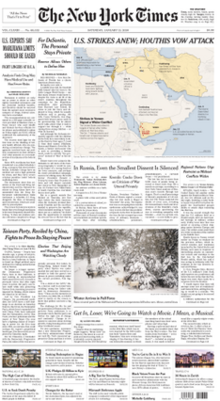Facts About News Articles Uncovered
Table of ContentsThe smart Trick of News Articles That Nobody is DiscussingLittle Known Facts About News Articles.The Main Principles Of News Articles More About News ArticlesAll about News Articles
Great knowledge of various topics gives students an one-upmanship over their peers. Although electronic and social media sites are conveniently available, we need to not forget just how crucial it is to review the papers. Parents must attempt and instill the routine of reading a newspaper as an everyday routine to proceed the heritage of the revered print tool.News stories additionally have at the very least one of the adhering to important attributes relative to the desired target market: proximity, importance, timeliness, human rate of interest, oddity, or effect.
Within these restrictions, news tales also aim to be extensive. However, various other variables are included, some stylistic and some derived from the media kind. Amongst the bigger and more respected newspapers, justness and balance is a significant consider presenting info. Commentary is typically constrained to a separate area, though each paper might have a various overall slant.
Papers with a global audience, as an example, often tend to make use of a more formal design of writing. The details options made by a news electrical outlet's editor or content board are typically accumulated in a design overview; common design overviews consist of the and the US Information Style Publication. The primary objectives of information writing can be summarized by the ABCs of journalism: accuracy, brevity, and quality.
All about News Articles
As a policy, journalists will not use a long word when a brief one will do. Information authors attempt to prevent utilizing the very same word extra than when in a paragraph (in some cases called an "echo" or "word mirror").
Headings often omit the subject (e.g., "Jumps From Boat, Catches in Wheel") or verb (e.g., "Feline female fortunate"). A subhead (likewise subhed, sub-headline, subheading, caption, deck or dek) can be either a subordinate title under the main headline, or the heading of a subsection of the write-up. It is a heading that comes before the main message, or a group of paragraphs of the major message.
Added signboards of any of these kinds may show up later in the write-up (specifically on succeeding pages) to attract additional analysis. Such signboards are also made use of as reminders to the post in various other areas of the publication or website, or as ads for the item in various other magazine or sites. Normal framework with title, lead paragraph (summary in bold), other paragraphs (details) and call details.

Instance of a hard-lead paragraph NASA is recommending another room project. The budget requests roughly $10 billion for the project.
An "off-lead" is the 2nd most vital front web page information of the day. To "hide the lead" is to start the short article with history info or details of second relevance to the readers, compeling them to read more deeply into a short article than they must have to in order to find the necessary points.
The 20-Second Trick For News Articles
Typical use is that one or 2 sentences each form their own paragraph. Reporters normally explain the organization or framework of a newspaper article as an upside down pyramid. The necessary and most intriguing components of a tale are put at the beginning, with supporting details following in order of decreasing importance.
It allows individuals to explore a topic to only the deepness that their interest takes them, and without the imposition of information or subtleties that they might think about unimportant, yet still making that details available to extra interested visitors. The great site upside down pyramid framework additionally makes it possible for posts to be cut to any type of approximate length during format, to suit the room available.
Some writers begin their stories with the "1-2-3 lead", yet there are many sort of lead readily available. This style usually begins with a "5 Ws" opening up paragraph (as described above), adhered to by an indirect quote that serves to sustain a significant component of the very first paragraph, and after that a straight quote to support the indirect quote. [] A twist can describe multiple points: The last tale in the information program; a "delighted" story to end the program.
Longer posts, such as magazine cover articles and the pieces that lead the within sections of a paper, are understood as. Attribute tales differ from straight information in a number of methods. Foremost is the lack of a straight-news lead, the majority of the time. Rather than offering the essence of a story up front, official site attribute writers may attempt to lure visitors in.
The 4-Minute Rule for News Articles
The reporter typically information communications with interview subjects, making the piece much more individual. A feature's initial paragraphs often connect an appealing moment or occasion, as in an "unscientific lead". From the details of a person or episode, its view quickly broadens to abstract principles regarding the story's subject. The section that signals what a function is about is called the or signboard.
The Editor's Toolbox: A Referral Guide for Beginners and Professionals (2001) Allan M. Siegal and William G. Connolly. The New York City Times Handbook of Design and Use: The Authorities Design Guide Utilized by the Writers and Editors of the World's A lot of Authoritative Paper (2002) M. L. Stein, Susan Paterno, and R.